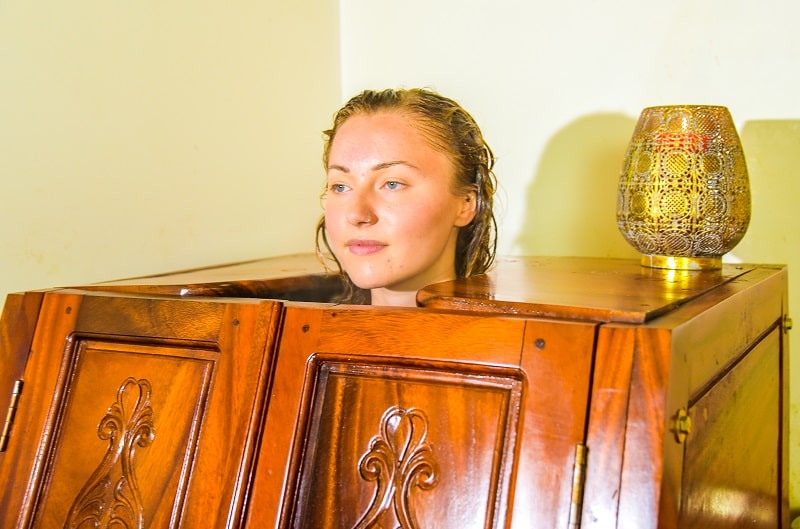There are several ways to improve health and cure diseases. Some people take health supplements and some trust in improving diet and lifestyle habits. In traditional medicine, there are several non-invasive procedures, which help in detoxification and thereby improve health and cure diseases. One of them is an herbal steam bath, which is also known as Sarvanga Bashpa Sweda in Ayurveda.
What is Herbal Steam Bath?
Herbal Steam Bath (Sarvanga Bashpa Sweda) is a common ayurvedic therapy in which person is exposed to steam mixed in herbs, for certain time, depending upon health issues. It causes profound sweating, which has several health benefits. It helps in improving blood flow to all parts of the body, which eliminates toxins and relieves body aches. In addition, it also opens the skin pores, cleanses the skin, removes dead cells and thus is very useful in the treatment of skin issues.
Herbal steam bath has special effects because of its herbal ingredients. Herbs enhance the effects of steam bath due to their specific active constituents. Most of them have several therapeutic effects like anti-inflammatory, dilatory, soothing etc.
Herbal Steam Bath Procedure
For this therapy, material and equipment are required as follows:
- Herbal Steam Bath Cabinet.
- Ayurvedic Oil for external application.
- Bed Sheet.
- Woollen Blanket.
- Cotton Towel.
Pre-operative procedure:
Before herbal steam bath, the patient must undergo Abhyanga (Full Body Ayurvedic Massage). It includes the external application of medicated ayurvedic oil according to the needs of the patient. Patient must pass urine and stools before the massage. The patient is asked to remove all clothes except undergarments. Along with this procedure, herbal steam is prepared for a steam bath. It is prepared by simmering medicinal plants and herbs in water.
After completion of Abhyanga, the patient is asked to sit in herbal steam bath cabinet.
Operative Procedure:
The patient is asked to sit conformably in the herbal steam bath cabinet and the head is kept outside, as shown in the picture below.
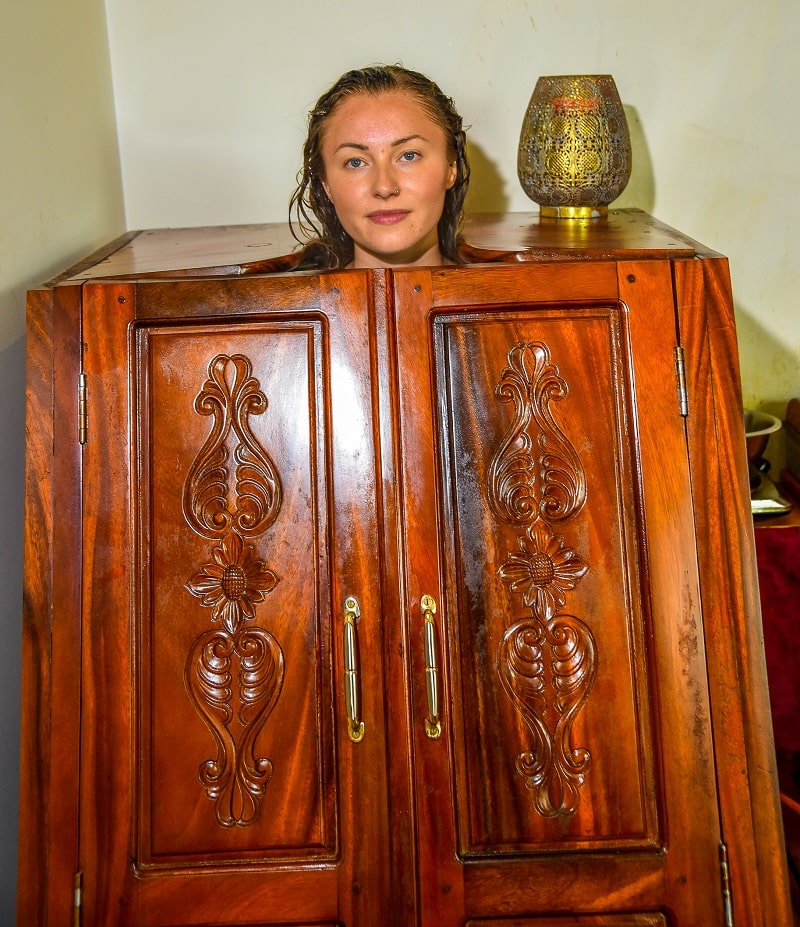
Herbal Steam Bath (Sarvanga Bashpa Sweda)
Then the steam generator generates the herbal steam in the cabinet. It is given for 15 to 30 minutes or until the obtainment of desired results. The patient should get perspiration from the whole body.
Note:
- If the patient is weak, steam can be given for a few minutes.
- If the patient has giddiness, he is asked to leave the cabinet and ask to take some rest. If giddiness persists, the ayurvedic practitioner may give some medicines to stop this. However, it happens in very rare cases. But you should be aware of this.
Post-Operative Procedure:
After completion of an herbal steam bath, the patient is asked to clean his/her body with a clean cotton towel. Further, he is advised to take 30 minutes complete rest. After an hour, the patient may take a hot water bath.
Necessary Precautions
- He/she should not be exposed to air or cold water immediately after the steam bath.
- After this therapy, the patient must not consume cold drinks or food with cold characteristics.
Herbal Steam Bath Benefits
Herbal Steam Bath has huge benefits. Some of these benefits are listed below:
- In ayurvedic perspective, herbal steam bath helps to liquify the morbid dosha. It removes toxins from Dhatus (tissues).
- The perspiration induced in this therapy clears the skin and removes waste products from the skin, which had been accumulated in the skin pores.
- It also relieves body aches.
- It increases blood circulation to different parts of the body.
- However, in a few cases, a slight increase in blood pressure can be observed during therapy, but after this procedure, it helps to reduce high blood pressure.
- It helps to detoxify the body by assisting in the elimination of toxins through the skin.
- Herbal steam bath also improves joint mobility and reduces joint swelling. Herbal steam has anti-inflammatory and analgesic properties.
- Improved blood circulation in this therapy also improves the reach of nutrients to each part of the body.
Herbal Steam Bath Therapeutic Uses
There are several herbs used in the herbal steam bath, which also have therapeutic benefits and uses in addition to the general benefits discussed above. Let’s dig into in which diseases it helps:
Osteoarthritis
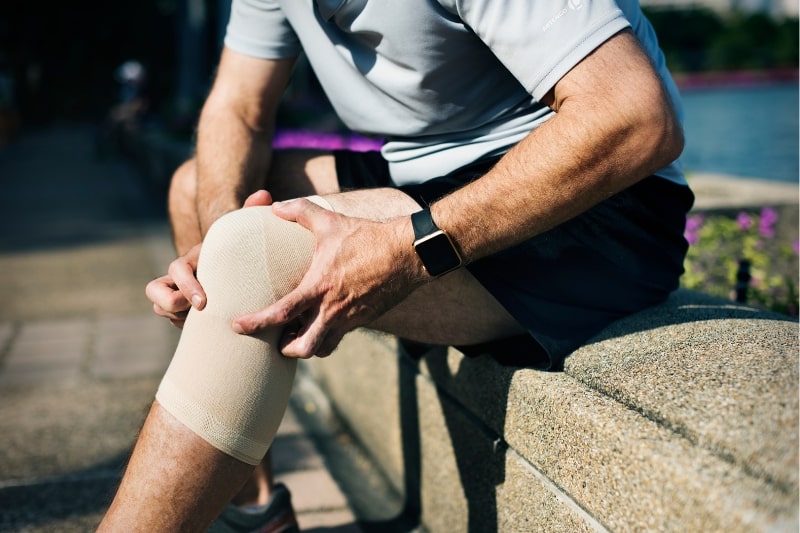
Osteoarthritis (OA) is a joint disorder that especially affects knee joints and weight-bearing joints. It occurs due to loss of joint cartilage and breakdown of underlying bones. It causes joint swelling, pain and stiffness.
Herbal steam bath reduces joint inflammation, swelling and stiffness. The primary action is observed on joint stiffness. If the patient has stiffness as a primary symptom, then it is very effective. If only a few joints are affected, then Nadi Sweda can also be beneficial.
Backache
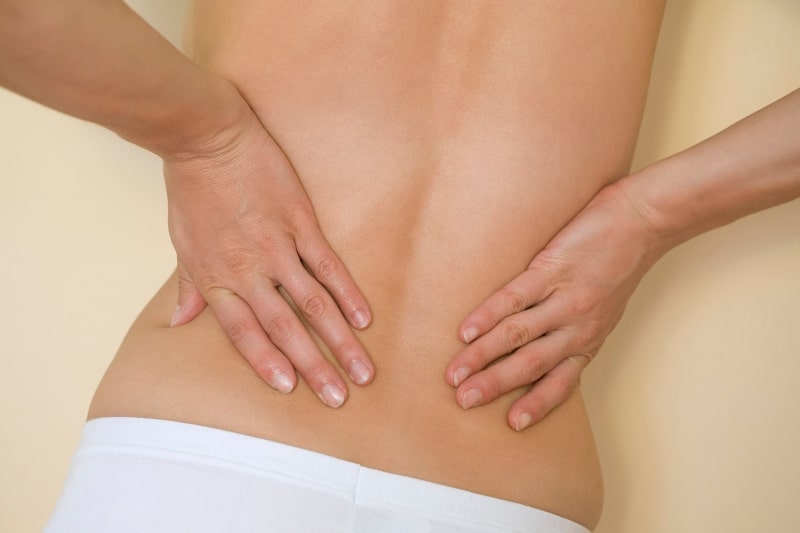
Body ache is a common symptom of stress-response hyper stimulation. Stress, lack of sleep, fibromyalgia, chronic fatigue syndrome, arthritis etc. are major causes of body aches. Along with the treatment of underlying cause, steam bath can also be used as a supportive therapy. In minor cases, it can help patient in reducing the frequency of body ache. Ayurvedic massage, which is done as preliminary procedure, also helps a lot in such cases because medicated oils have their own pain alleviating properties.
Obesity
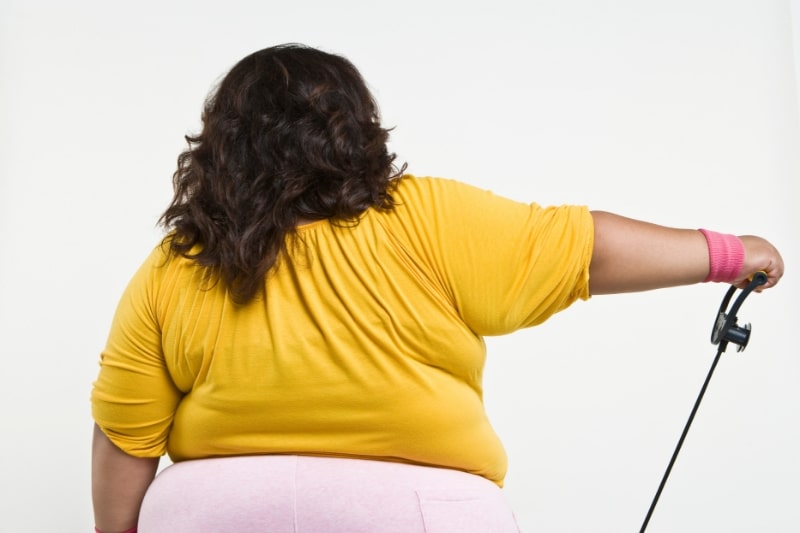
Obesity or being overweight is a common problem. Along with a healthy diet and lifestyle, one can also go for Udvartana (Herbal powder massage) and Herbal steam bath for losing weight.
Herbal steam bath liquifies the Kapha Dosha, which is a contributing factor for obesity or overweight. Liquification of Kapha dosha increases the effectiveness of anti-obesity ayurvedic medicines and herbs. Along with internal medicines, when a person goes for an ayurvedic steam bath, he experiences a huge fat loss and reduction in weight.
Sportsperson
Herbal steam bath is also beneficial for sports playing people. A study found the application of moist heat improves strength and soothes nerve ending. It further helps to relax the muscles and preserve strength. Herbal steam bath can have additional benefits because of special herbs and massage used before this procedure. Along with ayurvedic massage, an herbal steam bath can help to increase stamina, performance and endurance in sportsperson.
Allergic rhinitis
Nasal mucosa inflammation is a common cause of allergic rhinitis. It is characterized by nasal congestion, sneezing and nasal itching. In ayurveda, there are several herbs, which can reduce inflammation of nasal mucosa and helps in relieving allergic rhinitis. These herbs can be used in an herbal steam bath for improving health. A study has also shown the effectiveness of steam bath in such cases. However, they reported that there is no significant difference between simple water steam bath and herbal steam bath in relieving symptoms of allergic rhinitis. In our opinion, herbal water steam bath should be more effective because anti-inflammatory and immune enhancing herbs are used in this process.
Postnatal Care
There is a common finding in several studies that thermotherapy reduces postnatal symptoms. It alleviates muscular strain, reduces edema, improves appetite, lowers the feeling of heaviness in the limbs and soothes the nerves and helps in lowering pain.
Ayurvedic herbal steam bath is also a type of thermotherapy, which also exerts all these benefits. Along with ayurvedic postnatal massage, herbal steam bath is highly beneficial.
Side Effects
In a few cases, the patient may experience giddiness. However, it is a very rare side effect and manageable at ayurvedic clinics.
Contraindications
In a few cases, herbal steam bath is not recommended. It includes:
- Diarrhea.
- Bleeding disorders.
- Uncontrolled Diabetes mellitus.
- Giddiness.
- Jaundice.
- Broken Skin Disorders.
- Fever.
- Pregnancy.
- Severe Cardiac Diseases.
Summary
Herbal steam bath or Sarvanga Baspa Swedana is a common ayurvedic therapy, which is used in about 95% cases, which undergo Panchakarma Detox. It is highly effective for detoxification and improving overall health. Because it liquifies the dosha, which becomes easier to remove from the body through Panchakarma detox. A healthy individual can also undergo this therapy for relaxation and preventive purposes.
References
- Rastogi, S., & Chiappelli, F. (2013). Hemodynamic effects of Sarvanga Swedana (Ayurvedic passive heat therapy): A pilot observational study. Ayu, 34(2), 154-9. https://www.ncbi.nlm.nih.gov/pmc/articles/PMC3821243/
- Yadaiah P. Baspa Swedan, Ayurved Patrika, Varsha 49, Issue 4 (753) Oct. 95 pp:98-99
- Petrofsky, J., Berk, L., Bains, G., Khowailed, I. A., Hui, T., Granado, M., Laymon, M., … Lee, H. (2013). Moist heat or dry heat for delayed onset muscle soreness. Journal of clinical medicine research, 5(6), 416-25. https://www.ncbi.nlm.nih.gov/pmc/articles/PMC3808259/
- Tungsukruthai P, Nootim P, Worakunphanich W, Tabtong N. Efficacy and safety of herbal steam bath in allergic rhinitis: a randomized controlled trial. J Integr Med. 2018 Jan. https://www.ncbi.nlm.nih.gov/pubmed/29397091
- Zumsteg IS, Weckerle CS. Bakera, a herbal steam bath for postnatal care in Minahasa (Indonesia): documentation of the plants used and assessment of the method. J Ethnopharmacol. 2007 May. https://www.ncbi.nlm.nih.gov/pubmed/17293070

